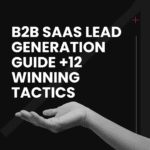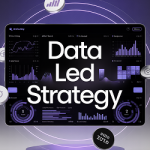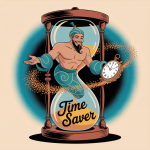B2B SaaS Lead Generation Guide +12 Winning Tactics
Attracting and qualifying new leads is the lifeblood of any successful SaaS company.
With customer acquisition costs climbing for SaaS companies across all stages and segments, and the B2B SaaS landscape rapidly becoming a “marketing eat or be eaten” ecosystem, it’s more important than ever for SaaS businesses to have a focused and consistent approach to lead generation.
This definitive guide unpacks 12 lead generation tactics that every SaaS company can use at some stage in their customer acquisition process. We’ve also covered proven frameworks and best practices that leading SaaS brands are using to attract and qualify new prospects, and convert them into paying customers.
The strategies in this guide are designed for SaaS marketers with limited resources who want to build a predictable lead generation engine, or SaaS founders scaling their first million in revenue and beyond.
What Are Qualified Leads? Definition of MQL vs SQL
Prospects simply filling a form or clicking a CTA are rarely ready to buy. A properly-qualified lead for B2B SaaS is one that has both demonstrated interest through engagement and matches specific qualification criteria.
Definition of MQL and SQL
Marketing Qualified Leads (MQLs) are leads who have demonstrated meaningful engagement with a SaaS company’s marketing content and qualify based on basic demographic information.
Common MQL behaviors include:
- Downloaded 2+ content pieces
- Attended a webinar or product demo
- Visited the pricing page 2+ times
- Opened 4+ marketing emails
- Matches firmographic (job title, company size, industry) or demographic (seniority, location) filters
Sales Qualified Leads (SQLs) are MQLs that have further qualified and are deemed “sales ready”.
SQLs typically have:
- Clearly expressed buying intent or timeline
- Budget or influence over budget
- A specific pain point the solution solves
- Willingness to engage with sales in conversations
The handoff from marketing to sales should occur when a lead both engages meaningfully with marketing and demonstrates they match qualification criteria. This allows the sales team to focus their energy on the prospects most likely to convert.
Why Qualification Matters
Lead qualification is the foundation for B2B SaaS lead generation because it directly impacts conversion rates.
Companies with effective lead qualification:
- 67% higher close rates vs no formal qualification process
- 25% shorter sales cycles due to better alignment
- 35% lower CAC due to increased efficiency
- Experience less sales team burnout chasing unqualified prospects
Ideal Customer Profile (ICP) & Buyer Personas
Effective SaaS lead generation begins with a deep understanding of who to target with marketing and sales efforts.
Building Buyer Personas
Buyer personas are fictional representations of an ideal customer based on research, data, and insights about existing and target customers.
A good buyer persona should include:
Job titles and seniority levels that use the SaaS solution
- Company size range, industry, and verticals
- Location and office setup (remote, hybrid, etc)
- Technology stack and solutions already in use
Firmographics:
- Revenue or number of employees range
- Growth stage (early, scale, enterprise)
- Business model (B2B, B2B2C, etc)
- Technology adoption stage (innovators, early/mid-late majority, laggards)
Pain Points:
- Specific challenges they’re trying to overcome
- Current workarounds or competitors they use
- Budget constraints and approval processes
- Decision-making timelines and urgency
Decision-Makers:
- Primary users of the solution vs economic buyers
- Other influencers involved in the buying process
- Committee size and composition
- Final authority for sign-off
Using Data and Surveys to Refine ICP
Data-driven insights are critical to defining and refining the ideal customer profile over time:
- Customer interviews to identify common characteristics
- Survey data from prospects and customers
- Analytics data showing which segments convert best
- Feedback from sales teams on deal patterns, objections, and failures
- Churn analysis identifying common traits among lost customers
12 Proven B2B SaaS Lead Generation Tactics
1. Content Marketing & SEO
Content marketing is one of the most effective and sustainable long-term lead generation strategies for B2B SaaS businesses.
Keyword Research & Topic Clusters
The first step to a content marketing strategy is keyword research:
- High-intent keywords related to buying solutions (“best CRM software”, “[your solution] alternatives”, etc)
- Problem-focused terms your ICP is searching for
- Bottom-of-funnel keywords that show buying intent
- Long-tail variations with less competition
Organize keywords into topic clusters around core themes. Create pillar pages linking to supporting articles, guides, and resources.
Long-form Articles & Pillar Pages
Provide ultimate resources covering a topic thoroughly. Examples:
- Ultimate guides (2,000+ words)
- Comparison and review articles featuring your solution vs alternatives
- How-to articles and tutorials solving specific use cases
- Original research reports with primary data
Optimize each piece of content for both search engines and lead generation via content offers and CTAs.
2. Product-Led Growth (Free Trials & Freemium)
Product-led growth focuses on the SaaS solution itself as the primary means of acquiring and expanding customers.
Free Trial Optimization:
- Sign-up process: Keep it frictionless, provide value immediately
- First session: Guide to value/productivity “aha moment” quickly
- Onboarding: Use progress tracking and defined milestones
- Feature engagement: Behavioral triggers for upsell opportunities
Freemium Best Practices:
- Offer useful free functionality that solves real problems
- Clearly communicate limitations that encourage upgrade
- Provide easy upgrade paths from free to paid plans
- Track feature engagement as upgrade triggers
- Nurture free users with tips and educational content
3. LinkedIn Marketing & Social Selling
LinkedIn marketing and social selling is one of the most powerful channels for B2B lead generation, with multiple touchpoints for engaging and converting prospects.
Sales Navigator:
- Find and follow top targets with advanced filters and account-saving features
- Track engagement and interactions with your profile
- Use TeamLink feature for warm introductions
Content Strategy:
- Share thought leadership, industry insights, reports, original research
- Comment and engage on prospects’ posts with value, not just self-promotion
- Publish articles addressing customer pain points and questions
- Live videos with LinkedIn Live for real-time engagement
InMail Best Practices:
- Personalize from the start, show you’ve done your research
- Lead with value and thought leadership, not direct sales pitches
- Keep concise, include 1 actionable next step
- Follow up regularly, be persistent without spamming
4. Paid Advertising (PPC & Social Ads)
Paid advertising can complement and supercharge organic acquisition channels, but it should be done thoughtfully and with clear testing and optimization.
LinkedIn Ads:
- Target by job title, company, industry, seniority, and other filters
- Sponsored content for thought leadership
- Use lead gen forms for frictionless capture
- Retarget website visitors with custom messaging
Google Ads:
- Target high-intent and bottom-of-funnel keywords (“buy X”, “X alternatives”)
- Create tight ad groups around specific themes
- Optimize landing pages for lead capture and conversion
- Leverage negative keywords to reduce wasted spend
Budget Allocation:
- Start 60% search / 40% social for most B2B SaaS
- Adjust over time based on performance and audience behavior
- Reserve 20% budget for testing new platforms
- Track CPL and adjust bids to hit target
5. Webinars & Virtual Events
Webinars consistently produce the highest-converting B2B SaaS lead generation campaigns.
Topic Selection:
- Focus on specific customer pain points and how to solve them
- Share insights, best practices, trends, and industry updates
- Demonstrate solutions in context and show clear results
- Invite customer success stories as panelists or testimonials
Promotion Strategy:
- Start 3-4 weeks in advance to build awareness
- Multi-channel promotion (email, social, ads)
- Reach out to industry influencers for co-hosting
- Create and share teaser and behind-the-scenes content
Follow-up Sequences:
- Recording for all registrants and attendees
- Segment follow-up based on engagement and attendance
- Additional resources related to topics discussed
- Schedule sales calls with most engaged attendees
6. Interactive Content (Quizzes & ROI Calculators)
Interactive content drives 2x engagement compared to static content, and can qualify leads as prospects provide specific details.
ROI Calculators:
- Quantify the potential revenue uplift or cost savings
- Capture detailed information about the prospect’s situation
- Provide results and send via email
- Follow up with personalized proposals based on results
Assessment Quizzes:
- Evaluate where the prospect is currently vs industry best practices
- Provide immediate value in the form of a scoring and recommendations
- Segment new leads based on results
- Nurture with content specifically related to their assessment
7. Referral & Affiliate Programs
Leverage happy customers, channel partners, and affiliates to generate high-quality leads and referrals.
Customer Referral Programs:
- Offer valuable incentives for successful referrals (account credits, cash, product upgrades, etc)
- Make it easy to track and refer with referral links
- Provide free templates, tools, and resources for referrals
- Recognize top referrers in public forums
Partner Affiliate Programs:
- Partner with other complementary B2B SaaS providers
- Set competitive commission structure
- Provide partners with marketing materials, creatives, training
- Track attribution accurately and fairly across touchpoints
8. Case Studies & Testimonials
Prospects need confidence that buying is right decision, especially in B2B SaaS where purchases are high value and have long term impact.
Case Study Structure:
- Start with a relatable customer profile
- Articulate the challenge or “pain” clearly
- Describe the solution you provided and implementation process
- Quantify results with clear metrics
- Include multiple quotes from stakeholders
Distribution Strategy:
- Feature prominently on website, sales materials, and trusted third-party sites
- Create different formats (written, video, infographic)
- Use in email nurture campaigns
- Share on social media and B2B SaaS review sites
9. AI Chatbots & Conversational Marketing
Chatbots automate and scale lead qualification 24 hours a day, as well as route qualified prospects to the right sales rep immediately.
Implementation Best Practices:
- Begin with 3-5 qualifying questions, then diverge based on answers
- Offer value immediately: resources, scheduling, best practices
- Route qualified leads to appropriate sales rep for warm call
- Provide human “escape” option at any time
- Track conversation quality and iterate/improve regularly
Personalization Tactics:
- Customize conversation based on visitor data
- Segment interactions based on traffic source
- Serve contextual and personalized content based on pages visited
- Integrate with CRM for real-time handoff
10. Co-Marketing Partnerships
Partner with other B2B SaaS brands to reach new audiences and add credibility to your message.
Partner Selection:
- Choose B2B solutions that are complementary, not competitive
- Audience must have overlap with your ideal customer profile
- Partner’s reputation and brand must be strong/positive
- Have clear expectations for lead sharing and attribution
Collaboration Ideas:
- Co-host webinars or virtual events
- Create joint content pieces or industry research reports
- Cross-promote each other’s blog posts and resources
- Guest on each other’s user conferences
11. Review Sites & Third-Party Platforms
Platforms such as G2, Capterra, TrustRadius, and others are increasingly being used by B2B SaaS buyers as part of the research process.
Profile Optimization:
- Complete all sections of your profile including FAQ and additional resources
- Upload high-quality product screenshots and video
- Prompt customers to leave reviews, track publicly and thank them
- Respond to and resolve all reviews professionally and promptly
Paid Opportunities:
- Purchase premium profile features and badges
- Use product-specific advertising options
- Sponsor relevant software categories on platform
- Capture intent data from visits and follow up
12. Cold Email Outreach
Done correctly, cold email is still a valid and effective B2B SaaS lead generation channel.
List Building:
- Use tools like Apollo.io, ZoomInfo, or Sales Navigator to find leads
- Verify all email addresses in your lists to maintain deliverability
- Segment by persona and company characteristics
- Continuously update lists to remove bounces and duplicates
Email Best Practices:
- Personalize from the start with detailed profile research
- Lead with value or insight, not product features
- Keep first email short and value-focused
- Include clear, single CTA (conversation, not demo)
- Follow up on a systematic cadence (minimum 4-6 touches)
Email Template Framework:
- Subject line: Specific value and problem-focused
- Opening: Personal connection or recent insight
- Body: Quick problem framing + value proposition
- Close: Soft CTA focused on conversation, not demo
Lead Qualification Frameworks: BANT vs MEDDIC
Lead qualification frameworks are standardized systems used by sales teams to qualify and prioritize prospects. Two of the most popular are:
BANT Framework
An acronym for the four key questions that identify top sales-ready leads:
- Budget: “What’s your current budget for this type of solution?”
- Authority: “Who else would be involved in this decision?”
- Need: “What’s driving you to look for a solution right now?”
- Timeline: “When are you looking to make a decision?”
Works well for more transactional sales where small teams make buying decisions.
MEDDIC Framework
A more comprehensive and structured qualification process that helps sales reps understand and qualify the entire buying committee. MEDDIC stands for:
- Metrics
- Economic Buyer
- Decision Criteria
- Decision Process
- Identify Pain
- Champion
Tailored to complex, multi-person decision making typical in enterprise sales. It requires more information about the buyer’s organization before scheduling demos.
Measuring and Optimizing Your B2B SaaS Lead Generation Funnel
A strong lead generation process measures and optimizes key KPIs at each stage of the marketing and sales funnel.
Key Metrics to Track
Critical metrics to track and optimize for effective SaaS lead generation:
Cost Per Lead (CPL)
- Benchmark: $50-$200 for B2B SaaS depending on channel
- Calculate by marketing channel to help with budget optimization
- Include fully-loaded costs in CPL including all tools, labor, agency fees, etc.
Customer Acquisition Cost (CAC)
- Total sales and marketing spend / new customers acquired
- Should be 3:1 ratio to Customer Lifetime Value
- Track by acquisition channel and customer segment
MQL-to-SQL Conversion Rate
- Industry benchmark: 20-30%
- Measure by lead source to identify high-quality channels
- Use to optimize MQL qualification criteria
SQL-to-Customer Conversion Rate
- Industry benchmark: 15-25%
- Indicates efficiency of sales process
- Track by lead source and sales rep
A/B Testing Landing Pages & CTAs
A/B testing and optimization increases conversion rates of landing pages over time.
Testing Elements:
- Headlines and value propositions
- CTA button color, text, and placement
- Form length and field requirements
- Social proof format and placement
- Page layout and visual hierarchy
Testing Process:
- Test one element at a time for clear attribution
- Run each test long enough to be statistically significant (typically 2-4 weeks)
- Document results and apply learnings across all landing pages
- Set testing cadence to ensure regular optimization
Nurture Campaigns
Not all leads are sales-ready when they arrive in the funnel. Lead nurture campaigns keep prospects engaged and on the way to purchase.
Email Nurture Best Practices:
- Segment campaigns by buyer persona and stage
- Provide value in every email, not just sales messages
- Use behavioral triggers to advance or segment contacts
- Include clear, single CTA
- Track engagement and adjust frequency
Workflow Examples:
- Welcome series for new subscribers (5-7 emails over 2 weeks)
- Buyer persona-specific nurture tracks (monthly educational content)
- Trial user sequences (daily tips and best practices)
- Re-engagement campaigns for cold leads
Emerging Trends in B2B SaaS Lead Generation
AI-powered personalization and community-led growth are two major trends in B2B SaaS lead generation.
AI and Predictive Analytics
Artificial intelligence and machine learning are increasingly being applied to SaaS lead generation for:
Personalization at Scale:
- Dynamic content based on visitor behavior
- Predictive send times and frequency
- Automated lead scoring
- Product recommendations
Predictive Analytics:
- Identify highest-value accounts most likely to buy
- Predict customer lifetime value for segmentation and targeting
- Optimize budget allocation across channels
- Forecast pipeline and revenue more accurately
Community-Led Growth
Creating a thriving community around your B2B SaaS product can become a powerful organic lead generation engine.
Platform Options:
- Slack groups for real-time discussions
- Private forums for more in-depth conversations
- LinkedIn groups
- Discord for more informal, ongoing engagement
Community Strategy:
- Provide value to community members, don’t overtly promote product
- Facilitate peer-to-peer interactions and learning
- Share exclusive content and tips with community members
- Recognize and reward active members and contributors
- Leverage insights and feedback to improve product and marketing






